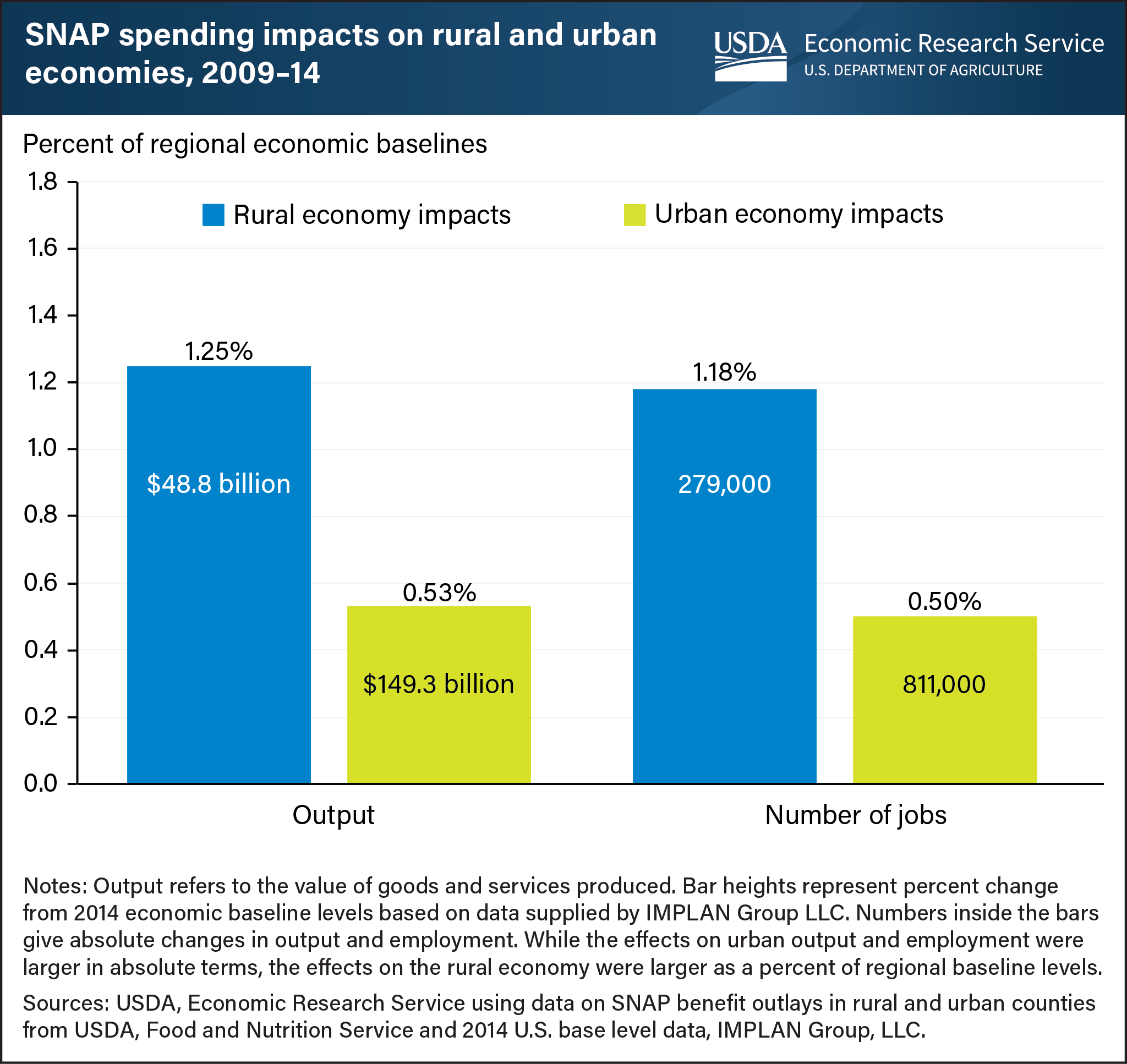SNAP spending contributed to rural economic output and jobs following the Great Recession
- by Katherine Ralston, Cristina Miller and Stephen Vogel
- 2/15/2022

USDA’s Supplemental Nutrition Assistance Program (SNAP) provides low-income U.S. households assistance to buy food items, which helps to support the economy during periods of high unemployment. Researchers at USDA’s Economic Research Service (ERS) studied the effect SNAP benefits had on the rural and urban economies during the period of high unemployment following the Great Recession from 2009–14. They found household spending of SNAP benefits contributed disproportionately more to the rural economy. SNAP benefits can only be used on food items—farm goods (such as fruits, vegetables, and milk) and processed foods (such as breads and pastas)—but using them frees up money to spend on other nonfood items. ERS researchers found SNAP benefit spending caused a ripple effect that helped to support local jobs and contributed to economic output through the production of goods and services. During the 6-year period, average annual SNAP benefit expenditures of $71 billion (in 2014 dollars) generated an annual increase in rural economic output of $49 billion and an urban output of $149 billion. Expenditures supported the employment of 279,000 rural workers and 811,000 urban workers. When measured in total dollars and numbers of jobs, household spending of SNAP benefits generated larger economic impacts in the urban economy. However, when measured as a share of total economic output and employment, SNAP generated larger relative impacts in the rural economy. Household expenditures of SNAP benefits increased rural economic output annually by 1.25 percent and rural employment by 1.18 percent. For the urban economy, SNAP benefits increased economic output by 0.53 percent and employment by 0.50 percent. This chart appears in the Amber Waves finding USDA’s Supplemental Nutrition Assistance Program (SNAP) Contributed to Rural Economic Output, Jobs Following the Great Recession, released December 7, 2021.
We’d welcome your feedback!
Would you be willing to answer a few quick questions about your experience?

